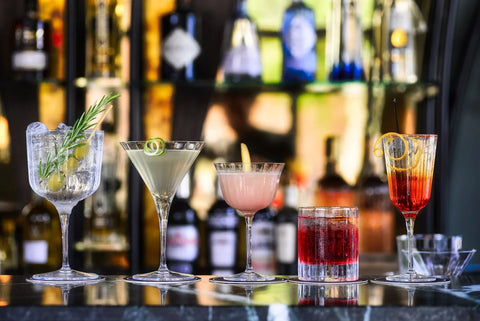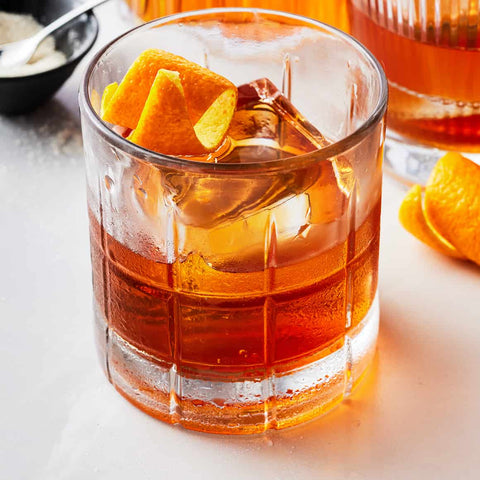The World's Best Cocktails: The Martini
Introduction
The martini stands as perhaps the most iconic cocktail in history. This sophisticated blend of gin (or vodka) and vermouth has become a symbol of elegance and refinement in cocktail culture.
Historical Origins
Originally created in the late 1800s, the martini's exact origins are disputed. Some claim it evolved from the Martinez cocktail in San Francisco, while others credit New York's Knickerbocker Hotel. The drink gained prominence during Prohibition and reached its cultural peak during the mid-20th century.
The Classic Recipe
Traditional Gin Martini
- 60ml premium London Dry gin
- 15ml dry vermouth
- 1 dash orange bitters (optional)
- Garnish: Olive or lemon twist
- Method: Stirred with ice, strained into a chilled martini glass
Key Elements
- Temperature: Must be served ice-cold
- Dilution: Proper stirring for optimal texture
- Garnish: Affects both aroma and flavor
- Glassware: Classic V-shaped martini glass or Nick & Nora glass
Famous Variations
Vodka Martini
- 60ml premium vodka
- 15ml dry vermouth
- Garnish: Lemon twist or olive
- Popularized by James Bond (though shaken, not stirred)
Dirty Martini
- 60ml gin or vodka
- 15ml dry vermouth
- 15-30ml olive brine
- Garnish: Olives
Gibson
- Classic martini recipe
- Garnished with cocktail onions
- Creates a subtle flavor variation
50/50 Martini
- Equal parts gin and vermouth
- More approachable style
- Historical predecessor to modern dry martini
Technical Considerations
Choosing Your Gin
- London Dry style traditional
- Plymouth gin historical alternative
- Modern gins offer new flavor profiles
- Must be high-quality
Vermouth Selection
- Fresh vermouth essential
- Refrigerate after opening
- Replace after 1-2 months
- Quality matters significantly
Stirring Technique
- Fill mixing glass with ice
- Add ingredients
- Stir 30-40 rotations
- Strain immediately
Temperature Control
- Pre-chill glass
- Use fresh, quality ice
- Serve immediately
- Keep ingredients cold
Cultural Impact
In Literature
- Featured in countless novels
- Symbol of sophistication
- James Bond connection
- Literary metaphor
Popular Culture
- Classic film appearances
- "Three-martini lunch" era
- Modern cocktail revival
- Social status symbol
Modern Interpretations
Contemporary Trends
- Return to higher vermouth ratios
- Craft gin explosion
- Boutique vermouths
- Alternative garnishes
Innovation
- Barrel-aged variations
- Smoke infusions
- Local botanical influence
- Temperature experiments
Expert Tips
From Master Bartenders
- Quality ingredients crucial
- Temperature control essential
- Fresh vermouth mandatory
- Precise measurements matter
- Proper dilution key
Common Mistakes
- Warm glassware
- Old vermouth
- Over/under dilution
- Poor quality spirits
- Wrong temperature
Serving Suggestions
Glassware
- Classic martini glass
- Nick & Nora glass
- Coupe glass
- Frozen glass essential
Garnish Guide
- Lemon twist: Brightest
- Olive: Traditional
- Orange twist: Complex
- Onion: Savory (Gibson)
Food Pairings
- Oysters
- Caviar
- Olives
- Nuts
- Cheese
Home Bartending
Essential Tools
- Mixing glass
- Bar spoon
- Julep strainer
- Quality glassware
- Ice molds
Ingredients Checklist
- Premium gin/vodka
- Fresh vermouth
- Quality ice
- Fresh garnishes
- Bitters (optional)
Professional Insights
Best Practices
- Use fresh ingredients
- Maintain proper temperature
- Practice consistent technique
- Understand customer preferences
- Present elegantly
Customization Guide
- Adjust spirit ratio
- Vary vermouth amount
- Consider garnish preference
- Adapt to taste
Conclusion
The martini remains the quintessential cocktail, embodying both tradition and innovation. Whether enjoyed in its classic form or through modern interpretations, its position as a symbol of sophistication endures. Understanding its nuances allows both professionals and enthusiasts to appreciate and create this timeless drink.




Comments (0)
There are no comments for this article. Be the first one to leave a message!